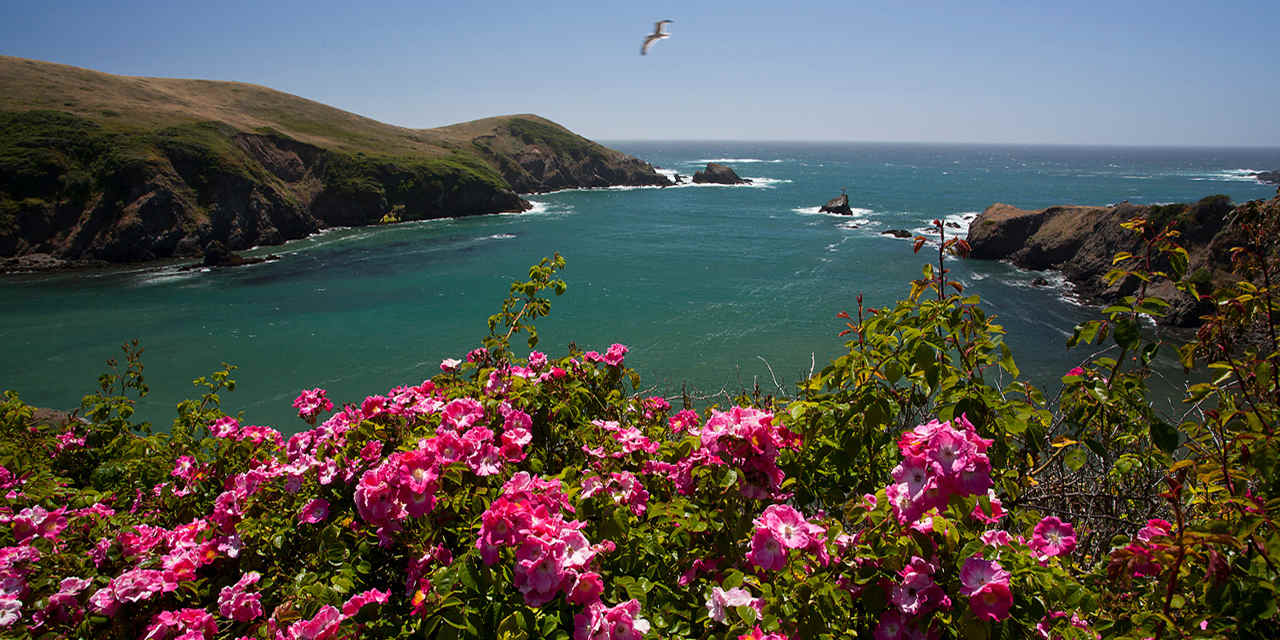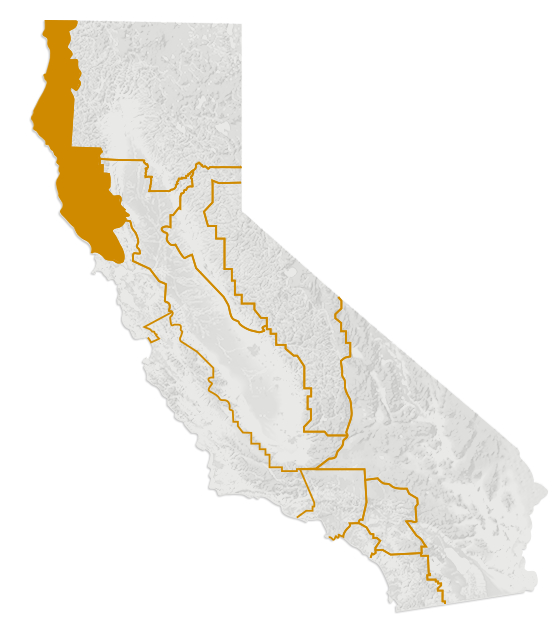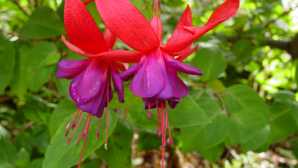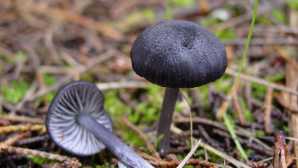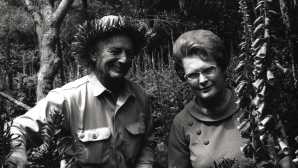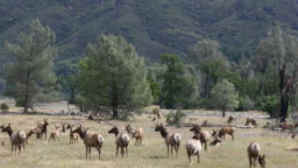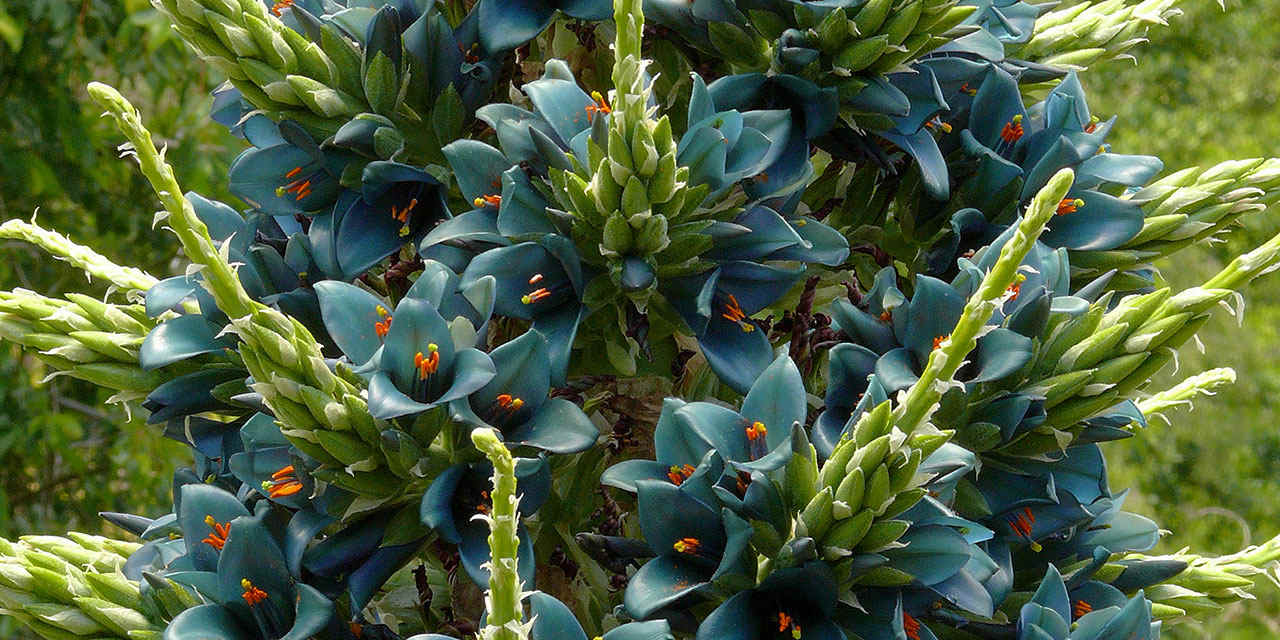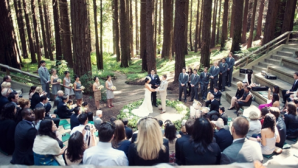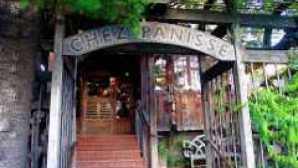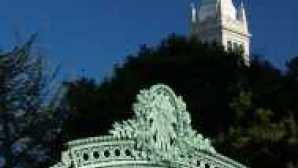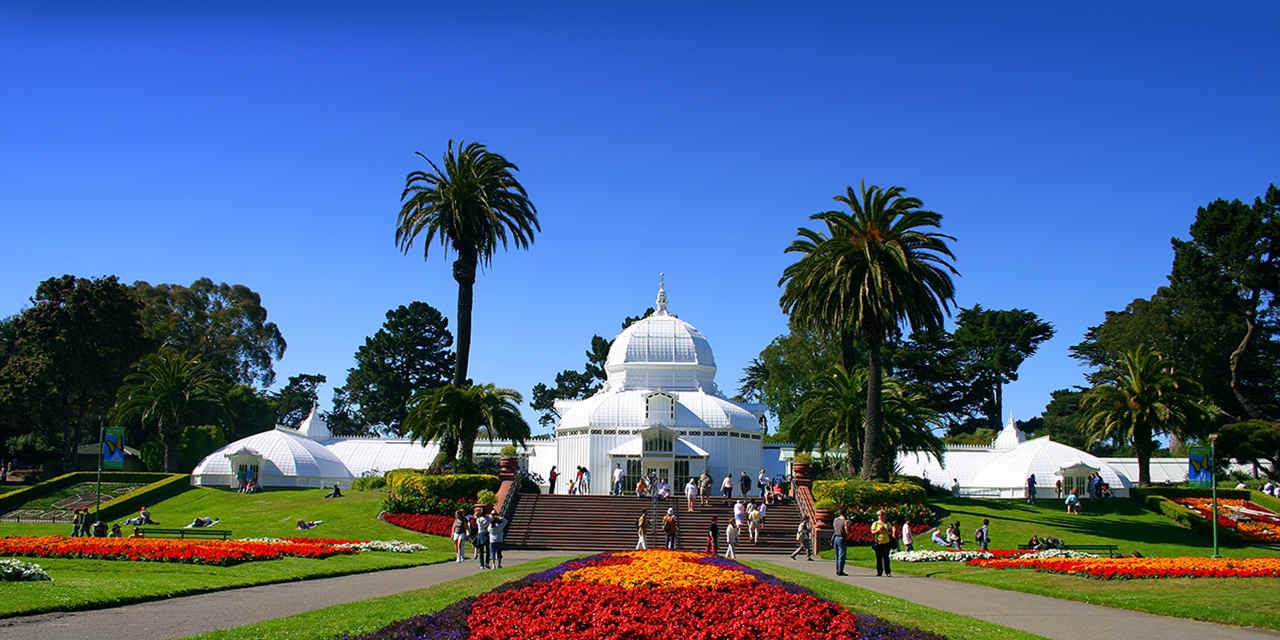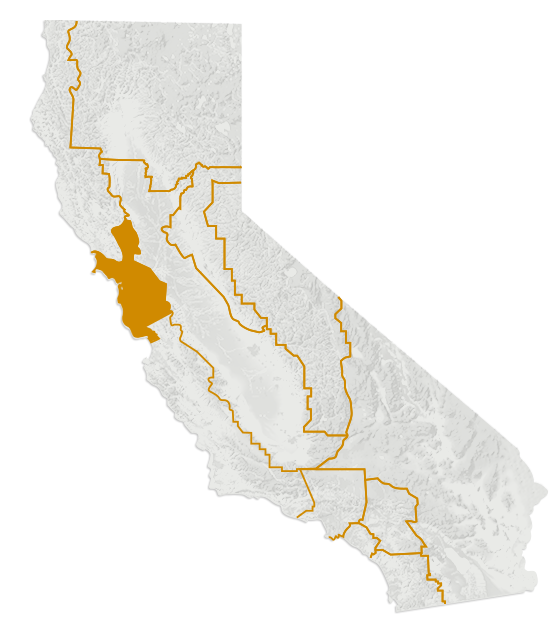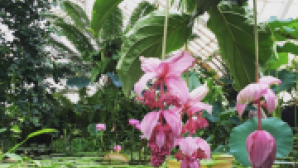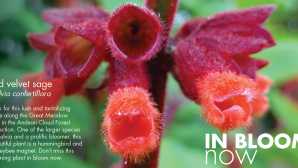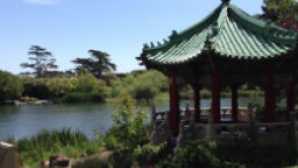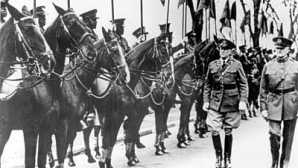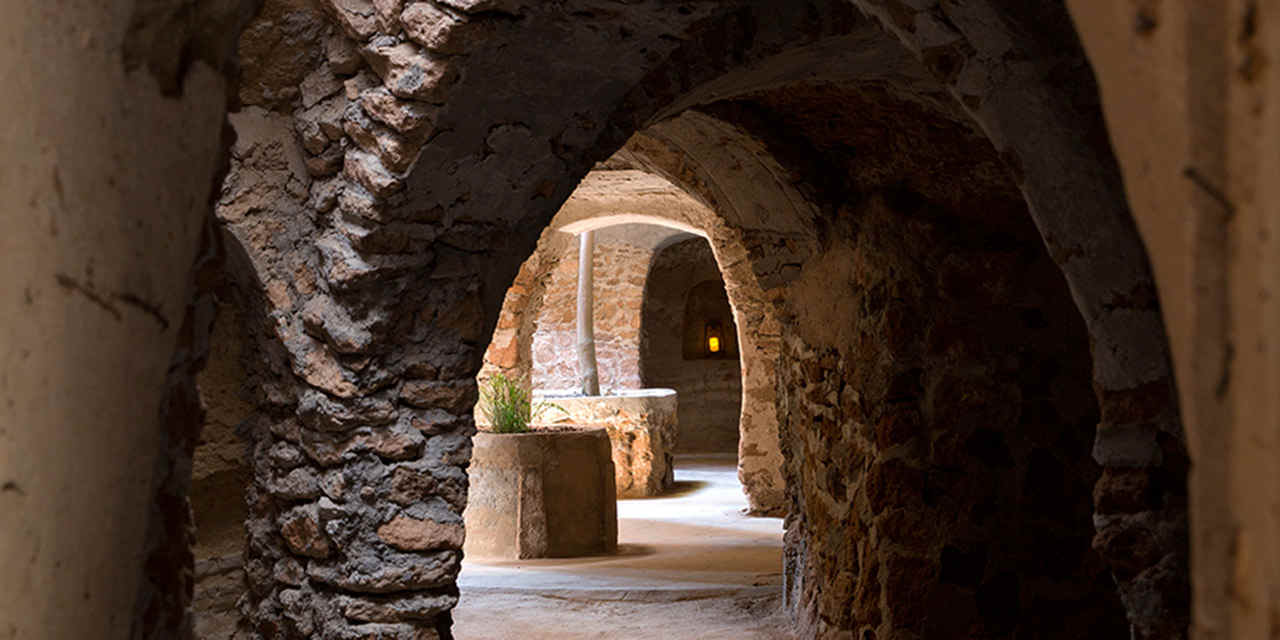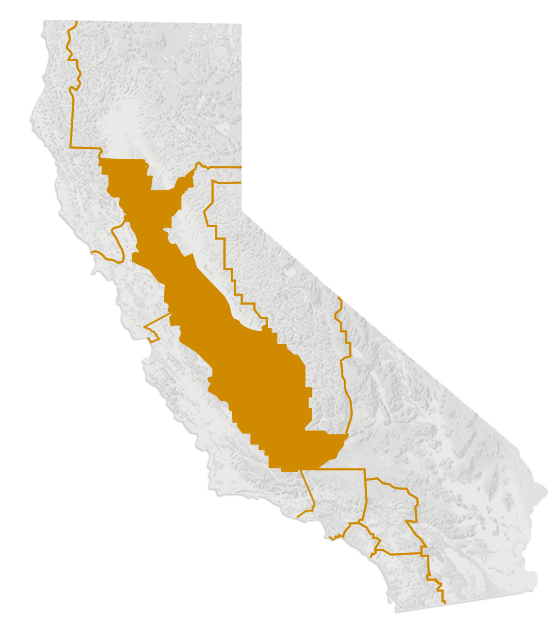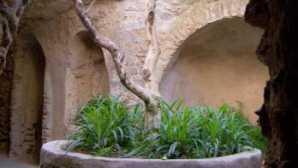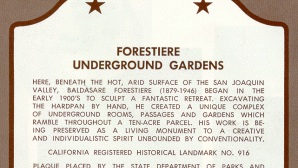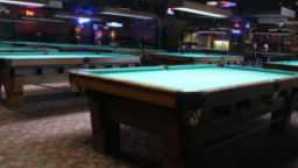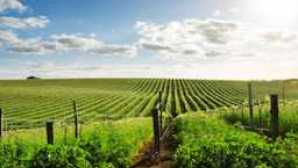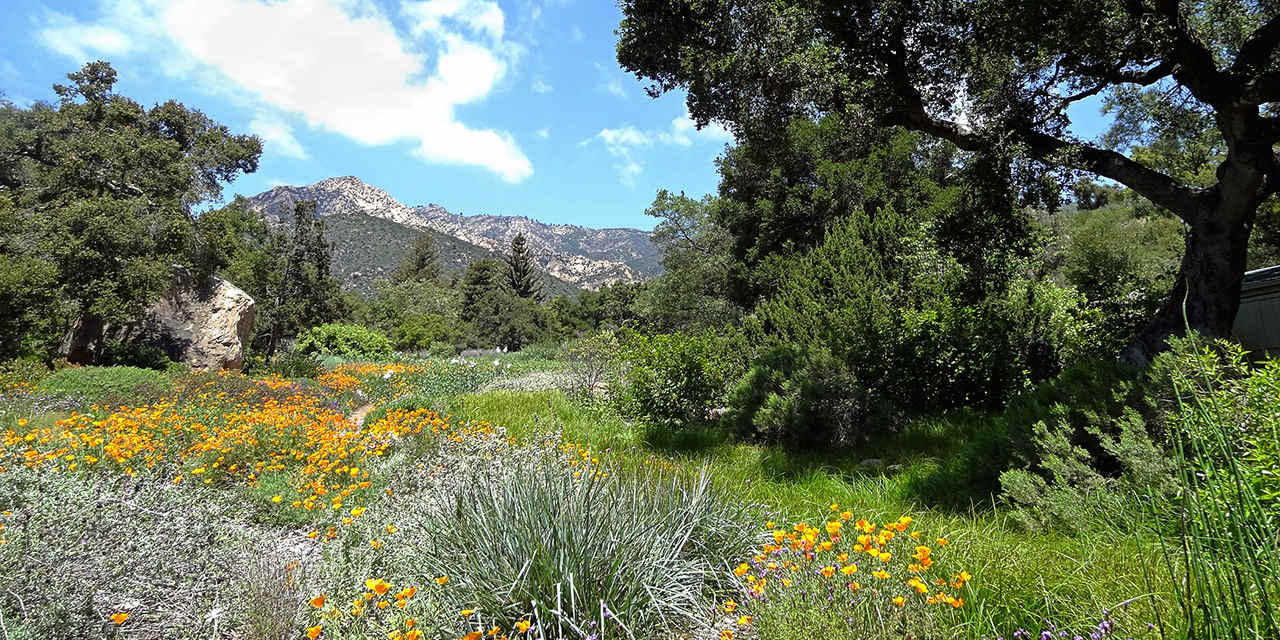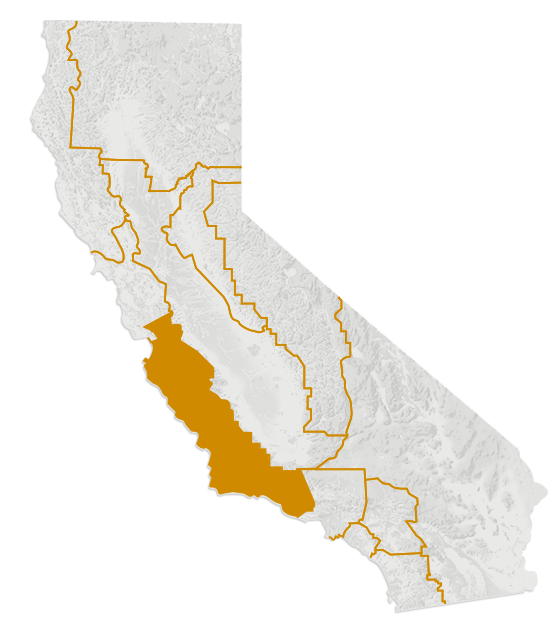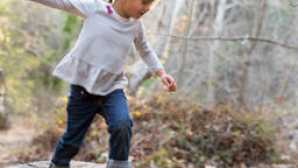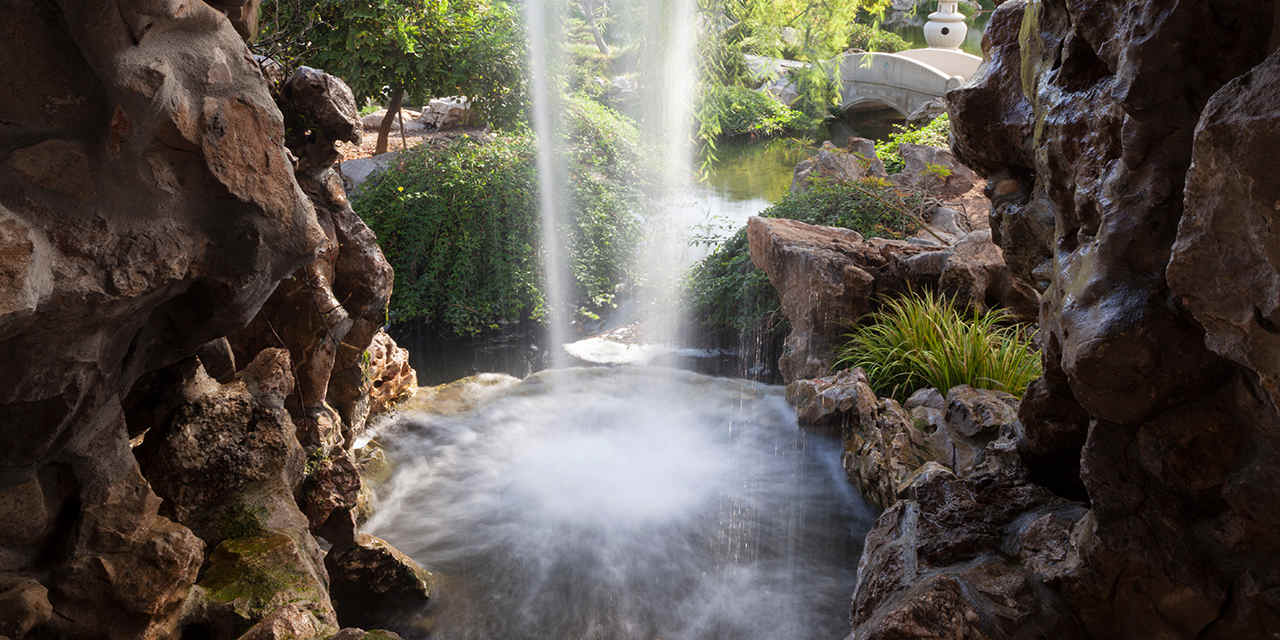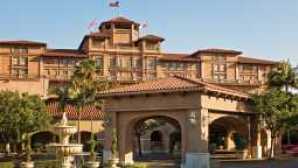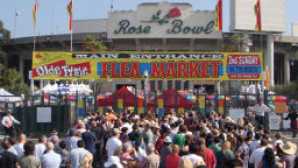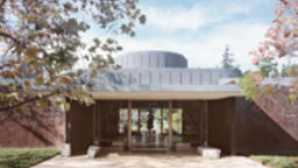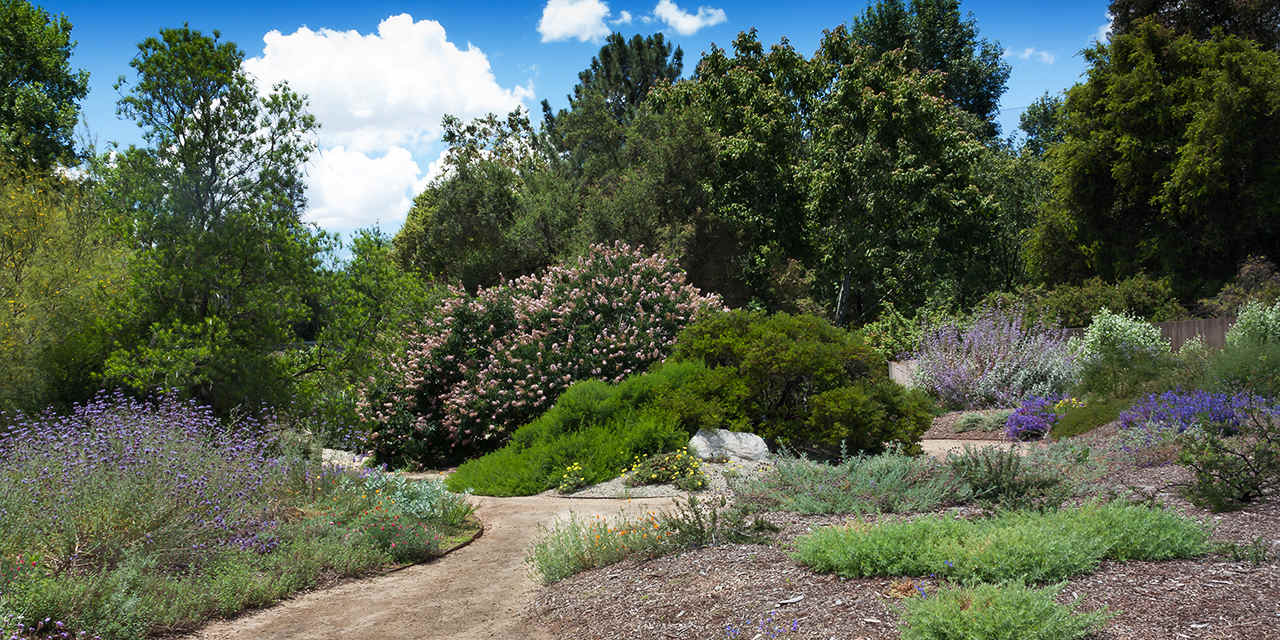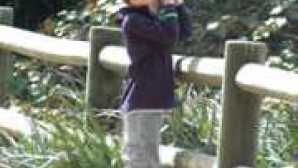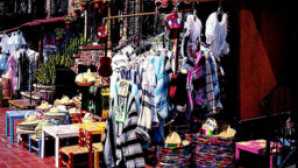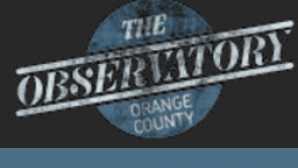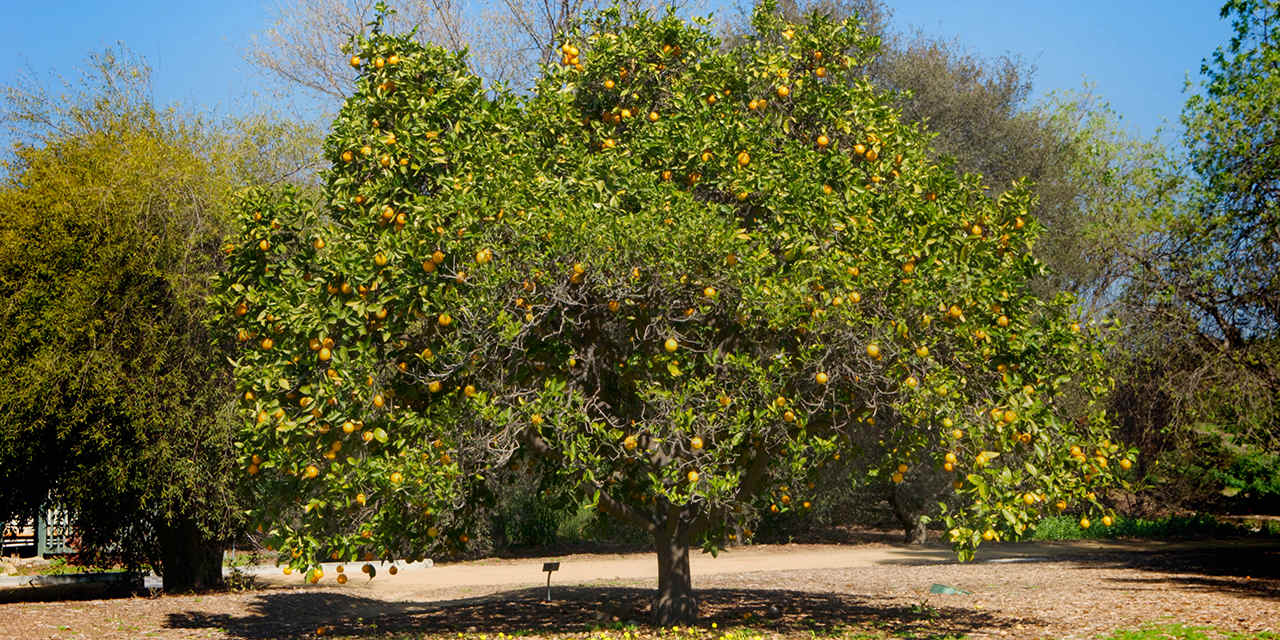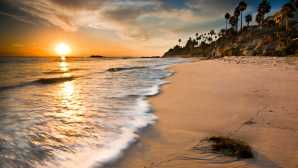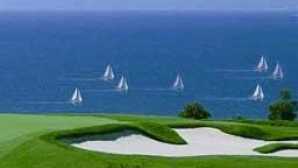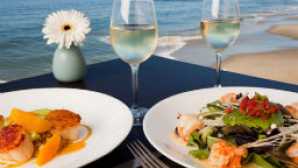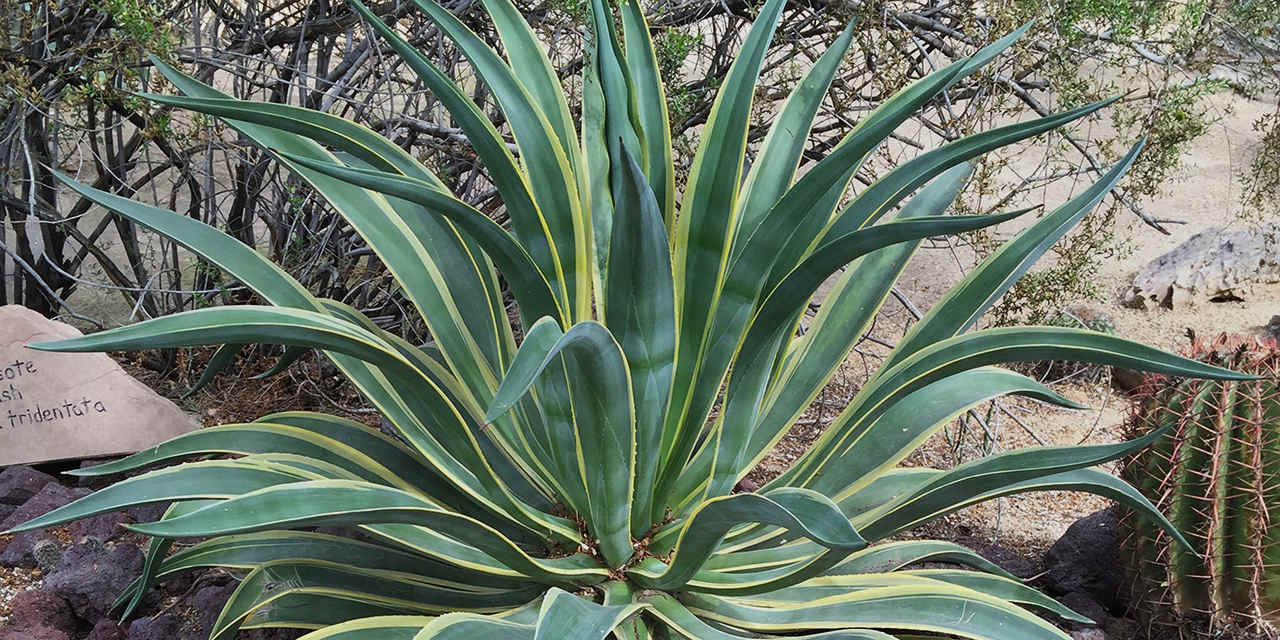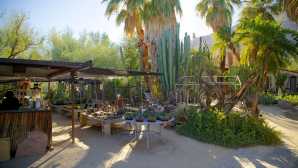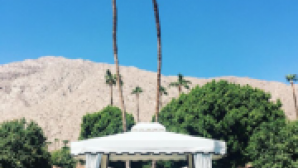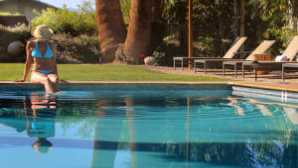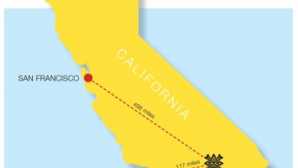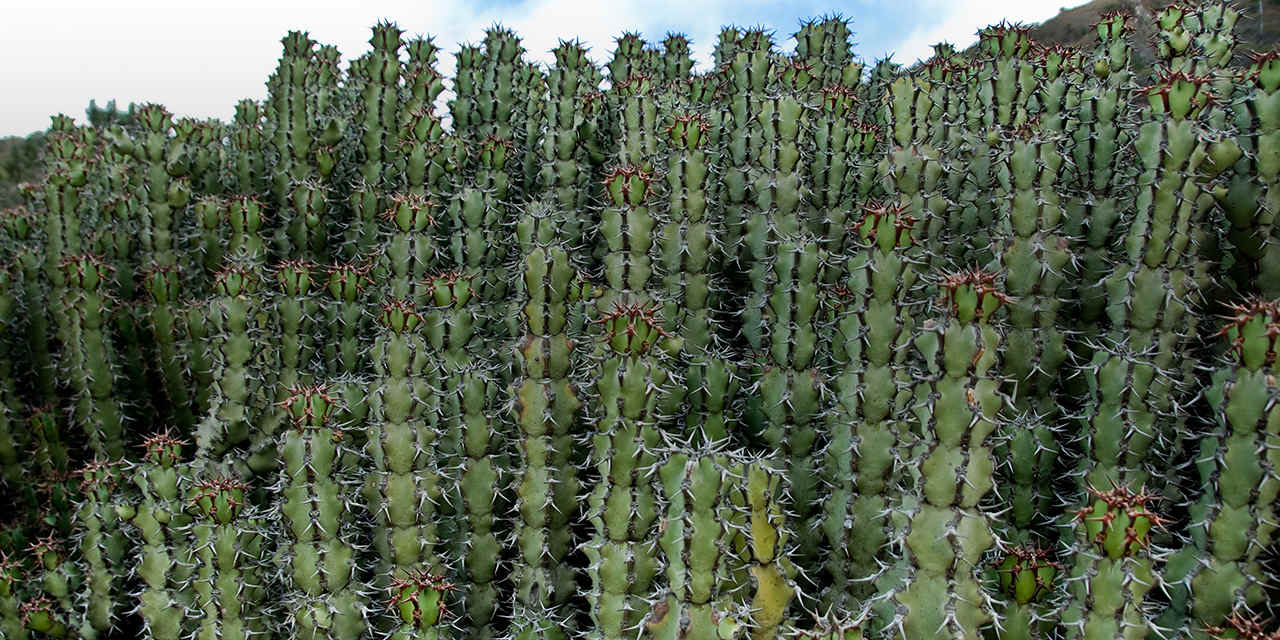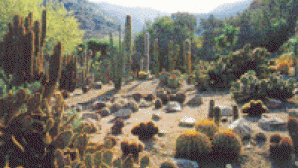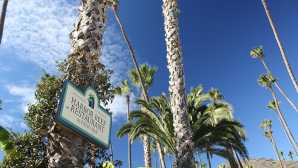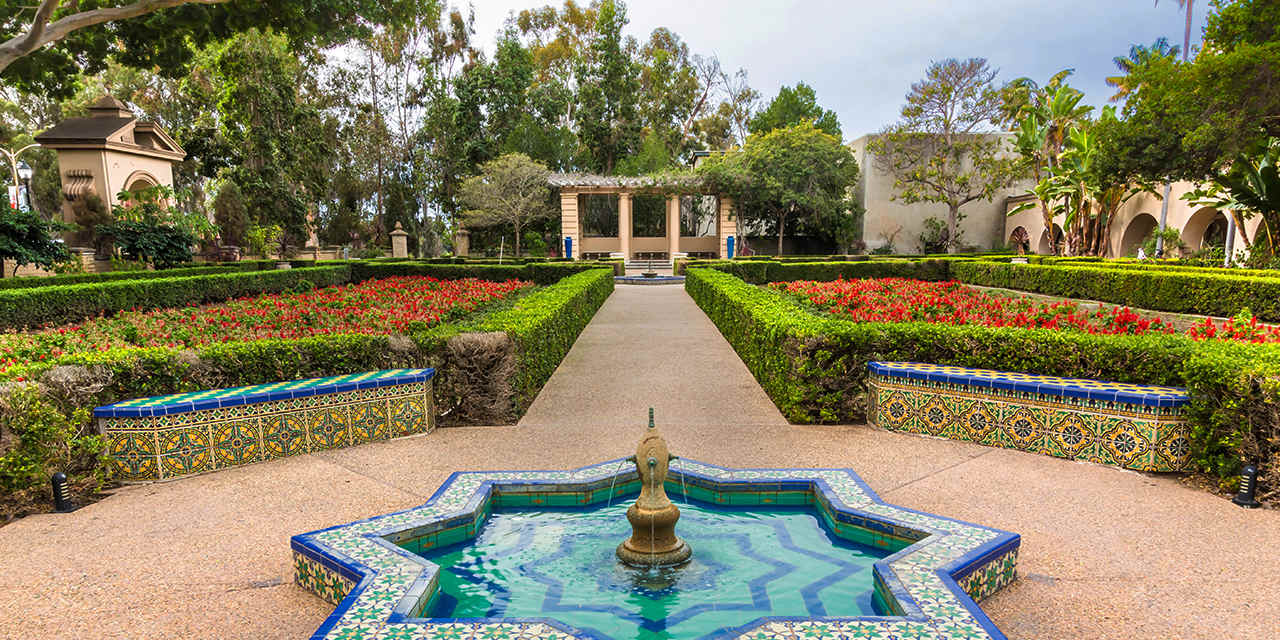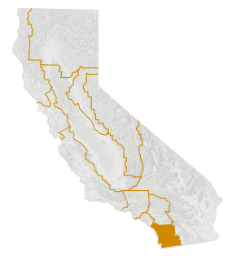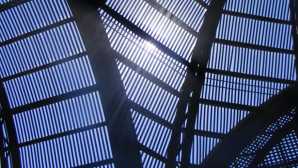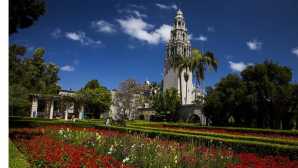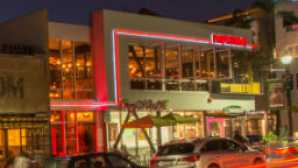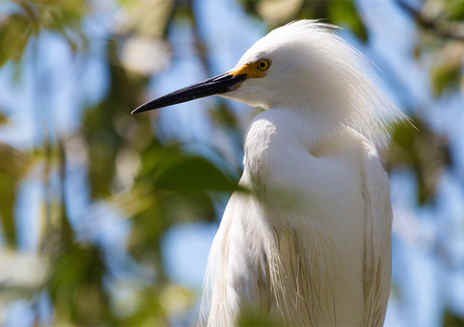For the latest on COVID-19 (Coronavirus) click here
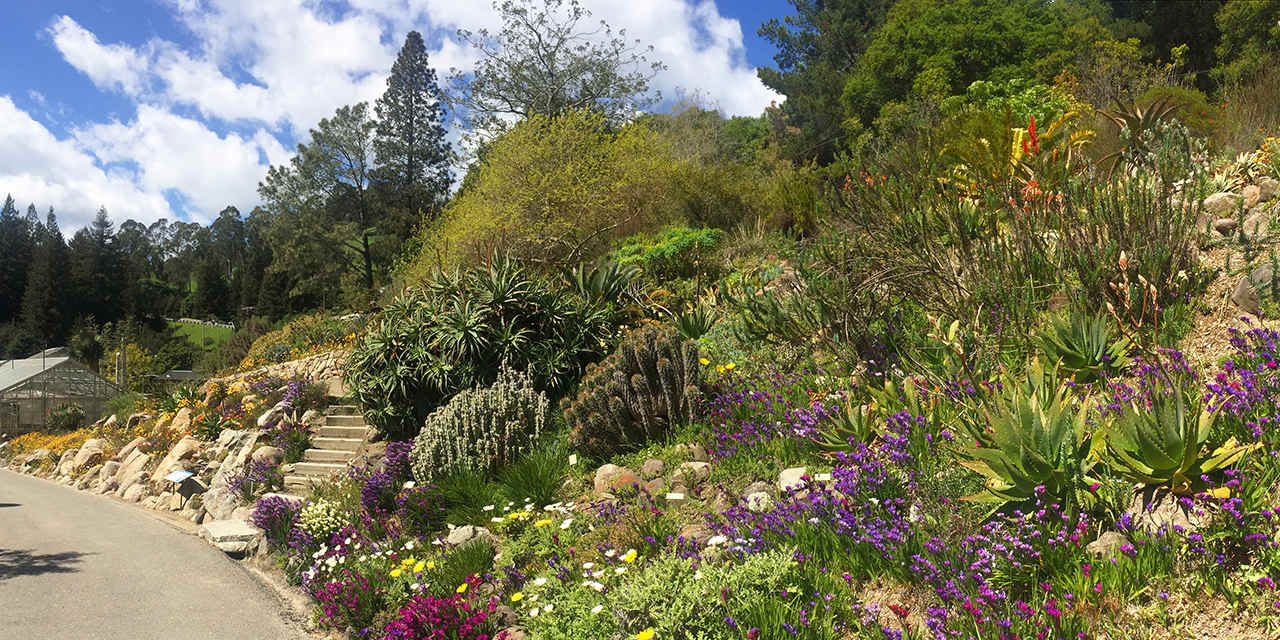
Must-See Gardens in California
Whether you’re an amateur botanist, a backyard gardener, or even just a curious kid, you should beeline to California’s incredibly diverse botanic gardens. These protected oases are often peaceful retreats—and a great way to chill out on a go-go-go vacation. Some gardens are fascinating looks at individual passions, like the underground lair hand-dug by Sicilian immigrant Baldassare Forestiere, or a railroad magnate’s collection of international gardens near Los Angeles. Add one or more of our favourite green gems into your itinerary, listed here north to south, and who knows what you’ll be inspired to do—or grow—back home.
—by Harriot Manley
Mendocino Coast Botanical Gardens
Rhododendrons as big as wedding bouquets, dahlias in popsicle-bright colours, ferns, fuchsias, succulents—it seems like the list of what doesn’t grow (and grow well) at this lush preserve must be shorter than what does flourish here. Walk among diverse plantings of perennials, trees, and shrubs—including many natives. Springtime—of course—is especially beautiful.
This is also a great spot for birding (some 150 species frequent the property), so bring binoculars for close-up views. If you’re traveling with kids, there’s one special feathered friend that will pique their interest: Quincy the Quail. Pick up a Quail Trail Guide at the park entrance so the kids can learn about Quincy and follow his hints for finding 17 quail markers along the stroller-friendly paths. The silly scavenger hunt, created by a long time volunteer with 11 grandchildren, takes you through a eucalyptus forest, past a bush that’s a home for hummingbirds, and down to a secret fairy village where kids can make fairy houses with petals, sticks, and stones.
Master gardeners and other experts teach assorted workshops throughout the year; check the calendar of events to see if something catches your eye and matches your schedule. During the winter holidays, come see the gardens sparkle during the Festival of Lights (late November to mid-December).
U.C. Botanical Garden at Berkeley
Climb into the Berkeley Hills to visit this dramatic 34-acre site. Shaded by soaring (and native) coast redwoods, this research garden and museum belonging to the University of California at Berkeley lets you follow winding paths to see naturalistic landscapes that feature more than 13,000 plant species, including rare and endangered plants.
Make sure to swing by Julia Morgan Hall, a rustic, wood-sided structure laboriously moved to the site from its original location on campus, and named in honour of its architect. Now overlooking the garden’s California native plant collection, the simple cottage-like building is polar opposite to Morgan’s best-known and arguably most lavish project: Hearst Castle along the Central Coast.
San Francisco Conservatory of Flowers
As pretty as a wedding cake, the Victorian bit of finery that is the San Francisco Conservatory of Flowers has provided a tranquil refuge from the hustle and bustle of the city for generations. Visitors can roam about several rooms filled with exotic plants, take a volunteer-led tour, or just sit and take in the otherworldly ambience.
The flora inside the warm, humid space can look like it's straight out of a Dr Seuss storybook, like the lipstick plant, whose crimson flowers emerge from a dark tube, or the Dracula orchid, the flowers of which resemble a dragon’s face. The broad lawns at the front, with flowerbeds planted in intricate designs, are a popular place to loll and snap photos, and have also proven to be a favourite location for weddings. From the edge of the Conservatory’s grounds, it’s a pleasant walk through Golden Gate Park to the San Francisco Botanical Garden, with 55 acres of paths and more than 8,000 kinds of plants.
First opened in 1879, the structure is the oldest public wood-and-glass conservatory in North America. Such fanciful buildings were once all the rage, a place where aristocrats could draw up in carriages and enjoy a bit of cultivated nature. San Francisco’s soaring conservatory almost faded like the rest: wealthy philanthropist James Lick originally ordered it to be part of his private estate south of the city, but died before the building was constructed. The pieces lingered in storage crates for years, until a group of prominent San Franciscans privately purchased them in 1877. The group then donated the materials to the city, which finally built the conservatory in Golden Gate Park.
From June to November, the tropical plant galleries host monthly Botanicals and Brews Beer Garden events, with live music, wine, craft beer and specially selected food vans. And from November to early January, the conservatory hosts its annual Night Bloom event, during which light and sound transform the setting into a radiant jungle with immersive and interactive experiences around every corner.
The Conservatory is open Tuesday to Sunday, 10 am to 6.30 pm Admission is free for all visitors on the first Tuesday of every month.
Forestiere Underground Gardens
Beneath the surface of the Central Valley, a staggering network of subterranean tunnels, chambers, and grottos meanders for some 10 acres, hidden just beneath the surface. This underground maze is the handiwork of Sicilian immigrant Baldassare Forestiere. From 1906 to 1946, the visionary builder, using only shovels, picks, and other hand tools, created this catacomb-like compound, allegedly as a cool subterranean retreat from the region’s soaring summer temperatures.
“He just kind of wanted to get out of the Fresno heat,” says Lyn Forestiere Kosewski, great niece of Baldassare and now owner of Forestiere Underground Gardens, which is open for fascinating tours nearly year-round. “He understood that it was cooler underground (from) the cellars back in Sicily.”
Far from a grim underground chamber, this is a subterranean home, with sky-lit rooms, a chapel, and even a fishing pond.
But this is no sombre collection of barren caves. Forestiere was building a home, and the hand-chiselled underground complex includes such seemingly incongruous touches as an underground fishing pond and a chapel. There are also open-air skylights, so that Forestiere’s collection of fruit trees and grape vines could thrive and bear fruit, even underground. It’s an ironic achievement, given that the young immigrant originally bought the parcel where the tunnels now hide as potential land to start a citrus empire, yet it proved to be all wrong for growing the lush groves Forestiere originally envisioned. So, with otherwise worthless land, he went down, using no plans other than the ideas in his head.
“Baldassare had to physically dig through this—three to five feet of sedimentary rock—not an easy task,” says Lyn Forestiere. “He got a lot of negativity from people who didn’t understand what he was doing.” According to historic reports, Forestiere once said that the visions he had for building his underground wonderland overwhelmed him. Seeing the results on a guided tour, you can’t help but be moved by the seemingly Herculean achievement of this humble Sicilian immigrant.
Insider tip: Forestiere Underground Gardens are closed December through February, and Monday and Tuesday of every week.

Santa Barbara Botanic Garden
This appealing garden, situated on the hilly east side of town focuses on the state’s diverse native plants. But here, you don’t just look and see, you do too. The calendar is packed with guided walks, bird-watching sessions, book signings, lectures, and workshops on painting and photography. Kids love the chance to see and learn about an authentic Japanese tea ceremony at the tea house, open the second Saturday of each month from noon to 2 p.m. (Tea house closed in May.)
Of course, it’s perfectly fine to just hang out and enjoy the view. More than five miles of paths loop around the 78-acre property, and it’s a fabulous place to take in vistas of the handsome Santa Ynez Mountains to the north and east, as well as the Channel Islands, surrounded by Pacific blue.
THE HUNTINGTON
Spreading across a historic estate near Pasadena, The Huntington Library, Art Collections, & Botanical Gardens wrap you in a global palette of sweet-smelling flowers, lush bowers, and elegant art. Today, it’s hard to imagine The Huntington’s early 1900s life as a working ranch, with citrus groves, alfalfa fields, orchards, and a collection of cows and chickens.
Railroad magnate Henry Huntington first bought the ranchland in 1903 and retired here to pursue his love of art and rare books—which he housed, in part, in a 1911 Beaux Arts mansion that is now the Huntington Art Gallery. Outside, the 120-acre estate is home to more than 15,000 plant varieties, found in more than a dozen unique gardens. Stroll the Rose Garden, for instance, and see 1,400 different varieties, or the Chinese Garden, with its lake, stone bridges, and waterfalls. Don’t miss the 6.5-acre Frances and Sidney Brody California Garden, home to 50,000 Golden State natives and dry-climate plants.
Head inside The Huntington to see the range of masterpieces, such as Gainsborough’s famous portrait The Blue Boy, Mary Cassatt's Breakfast in Bed, and Edward Hopper's The Long Leg. The library section, meanwhile, features an extremely rare Gutenberg Bible, an illuminated 15th-century manuscript of Chaucer’s The Canterbury Tales, and Shakespeare's First Folio, as well as manuscripts by Charles Dickens, Henry David Thoreau, and California-cultivated authors Jack London, Octavia Butler, and Christopher Isherwood.
It’s easy to spend a full day here—after all, there are five places to eat. At 1919, named for the year the Huntington was founded, get a brick-oven pizza and a glass of wine, or order tacos from its branch of Border Grill, created by L.A. modern-Mexican chefs Mary Sue Milliken and Susan Feniger. The Freshwater Dumpling & Noodle House overlooks the Chinese Garden, while the Rose Garden Tea Room offers a traditional afternoon tea (including a great kid-friendly option). Or, grab a latte and a scoop of local Fosselman’s ice cream at the Red Car coffee shop.
Rancho Santa Ana Botanic Garden
Explore California—or at least its plants—with a visit to this expansive site. The largest botanic garden focusing solely on the Golden State’s native plants, the site functions not only as a welcome retreat on the northeast side of Los Angeles County, but also as an important research and educational facility—and a terrific place for inspiration if you want to add California natives to your garden. Conservation of critically endangered plants is a big part of the garden’s mission, and it now protects a number of them that barely survive in the wild, such as Catalina mountain-mahogany (less than a dozen individual plants remain in a secluded valley on Santa Catalina Island).
Explore the grounds on your own, or take a guided tram tour. In about one hour, you’ll learn about plant communities from the California coast to the state’s southeastern border in the Mojave Desert. Check the calendar for free walks for beginning birders, and wildflower walks in spring (typically weekends, late March to early May).
Fullerton Arboretum
Thriving on land that once was the site of an orange grove, this parcel on the north end of the Cal State Fullerton campus is the largest botanical garden in Orange County. Developed with huge input and fundraising from CSU Fullerton students, the arboretum is a lovely place to stroll among more than 4,000 plants, and watch ducks paddle about in the garden’s ponds and streams. Visit collections devoted to woodland, desert, and Mediterranean plant species, as well as extensive cultivated gardens, a new orchard, and new wildflower section.
If you’re feeling more energetic, consider joining a guided nature tour, or visit the 1894 Heritage House, a tidy Victorian-era cottage open on weekends and staffed by docents dressed in period attire.
Moorten Botanical Garden
If you think of the desert as a place dotted with spine-wielding cacti, you’re right. But it’s also a place of cool and shady palm oases, delicate succulents, and fabulous bursts of springtime colour. See examples of the region’s varied plant life—as well as species from other desert environments around the world—at this low-key, family-run garden. Started in 1938 by the Moorten family as a private arboretum, the family now invites the public to follow a winding trail to see more than 3,000 types of desert-loving plants.
As you explore, look for brightly coloured rocks and sparkling crystals, fossils, and pioneer and mining relics among the plantings. The Moorten family’s tranquil Mediterranean-style home, nicknamed the “Cactus Castle,” is located in the Palm Grove Oasis, and it hints at the style of the region before the skinny-tied Rat Pack sashayed into town.
Wrigley Memorial & Botanic Garden
There’s something already special about riding a boat to your vacation destination, so this unusual site on Santa Catalina Island—a 45-minute cruise from Long Beach—has extra allure. From the island’s main village (and port) of Avalon, stroll through town and up the canyon to visit the 38-acre gardens, with a special emphasis on plants endemic to California islands. Don’t feel like walking? Do like the locals and rent a golf cart to explore the island (full-size rental cars aren’t allowed), or catch the local trolley.
Within the garden is the striking stone memorial to William Wrigley Jr., who died in 1932. Head of the Wrigley chewing gum empire, he had a huge influence on the island’s history and development, buying roughly 90 percent of the island and protecting it as a private land conservancy. He also built steamships to improve access and put in utilities and key buildings, including the circular Catalina Casino, on the edge of the main harbor and one of California’s most striking buildings.
Balboa Park Botanical Building and Gardens
There’s a reason why Balboa Park’s stunning Botanical Building graces countless Instagram posts. Constructed with slats to allow for the proper sunlight and air circulation for plants, this soaring lath house was built for the 1915–16 Panama-California Exposition and is one of the largest of its kind in the world, flawlessly framed by a flower-trimmed lily pond. With its distinctive blend of architecture and flora, this is easily one of the most photographed spots in all of Balboa Park.
But this dramatic building located on the El Prado walkway, next to the Timken Museum of Art—is more than just a pretty face. Step inside the jungle-y interior (no entry fee required) to walk beneath towering tree ferns and a Technicolor display of exotic orchids and other showy blooms. The indoor collection includes some 2,100 tropical plants permanently on show, and seasonal flower displays like the special Easter lily shows add even more eye-popping beauty to the scene. Don't miss the ferns, cycads and palms, as well as the 'scratch-and-sniff' garden.
But you’ll also want to head outdoors, of course, to explore Balboa’s many lovely gardens. The Old Cactus Garden, Desert Garden and the California Native Plant Garden all showcase succulents, cacti and other drought-resistant plants that typically flower from January to March. With more than 1,600 blooms, the Inez Grant Parker Memorial Rose Garden is the sweetest smelling spot in the park, especially in spring.
If you’re looking for a more international experience, check out the Alcazar Garden (designed after Alcazar Castle in Seville, Spain) where manicured flower beds and box hedges meet at mosaic turquoise fountains. On the other side of the world, but just a few hundred yards away, the Australian Garden invites visitors to explore the flora, including eucalyptus and spider flowers. The Japanese Friendship Garden offers austere beauty coupled with Sukia-style structures, stone arrangements and koi ponds.
Children will love the EthnoBotany Children’s Peace Gardens, where nearly every plant is edible. Learn about organic herbs, fruit trees and vegetables, and visit the Monarch Way Station to watch the lovely monarch butterflies flit by. The Zoro Garden, next to the Fleet Science Center, is also home to a number of butterfly species. Every May, the Zoro hosts an Annual Butterfly Release where hundreds of painted ladies take flight.
Insider tip:the Botanical Building offers free admission, but make sure you plan your visit: it’s open every day of the week from 10 am to 4 pm, except Thursdays.


